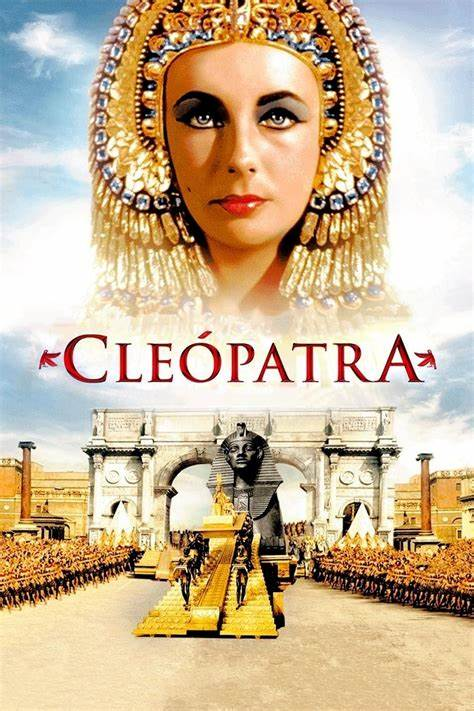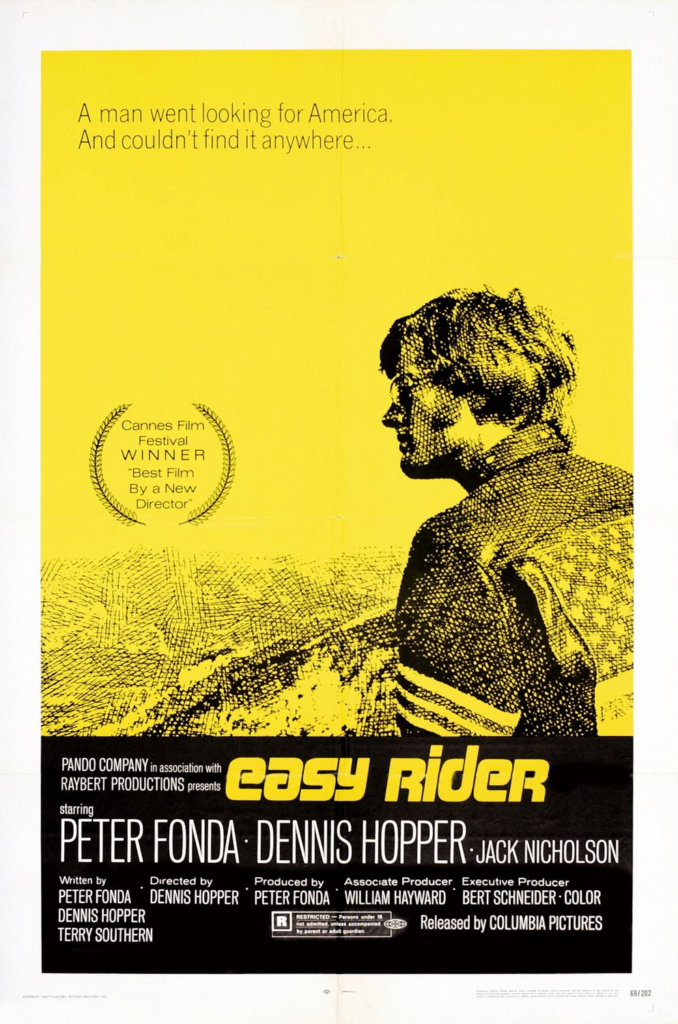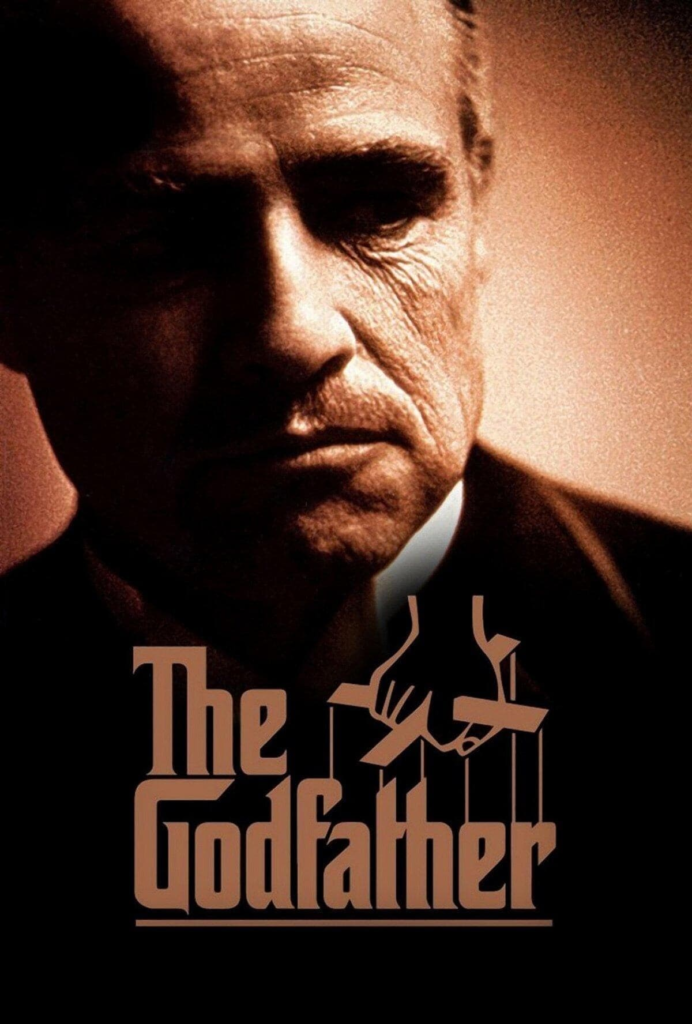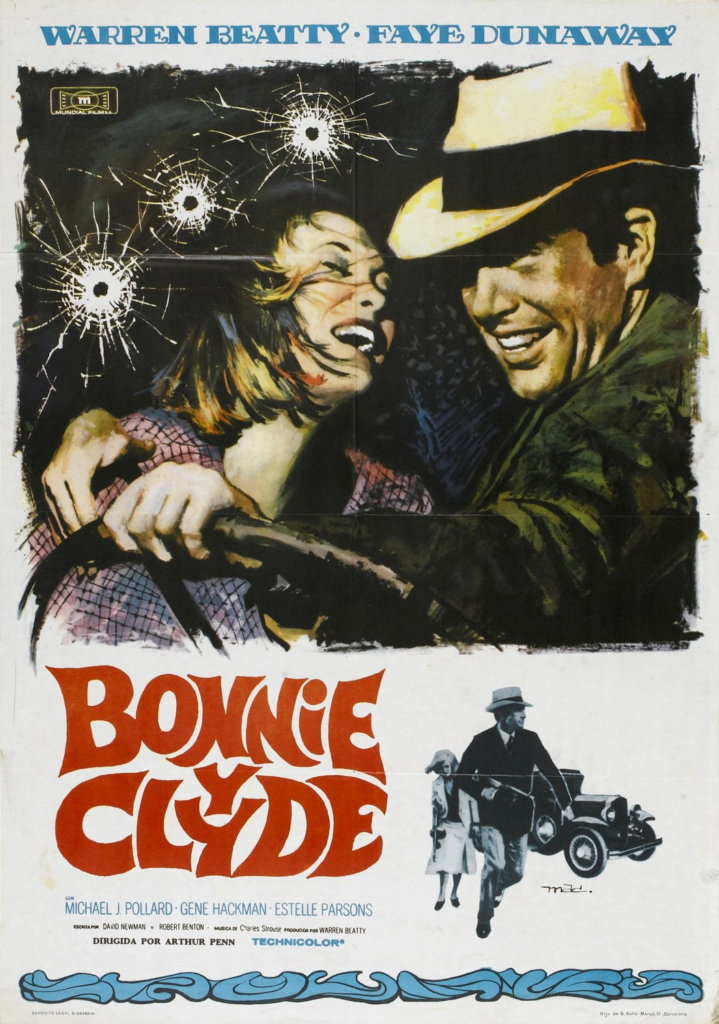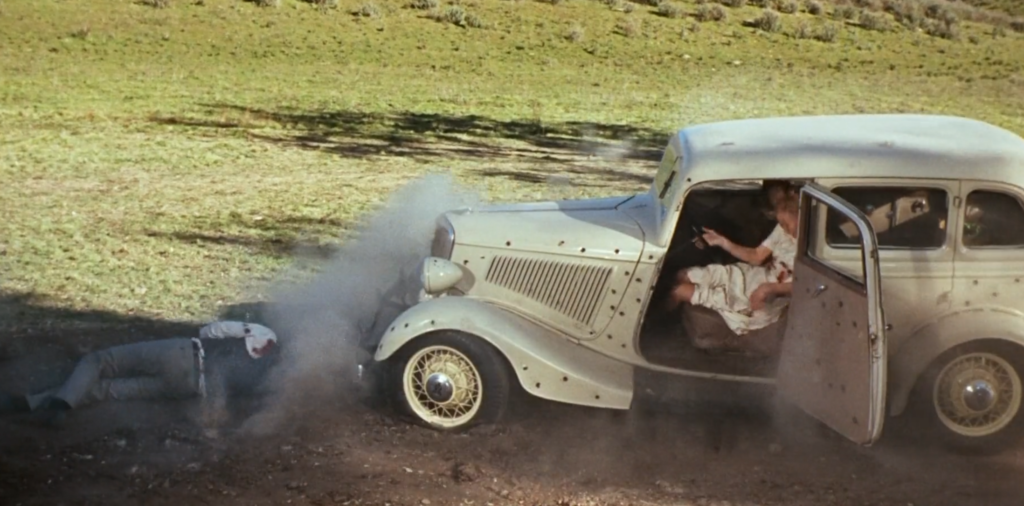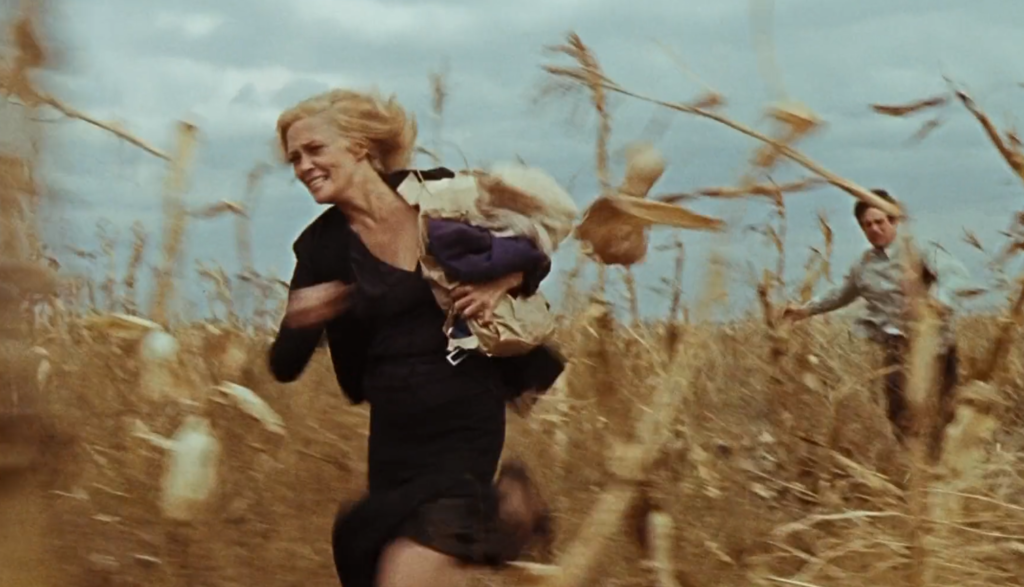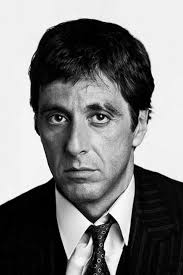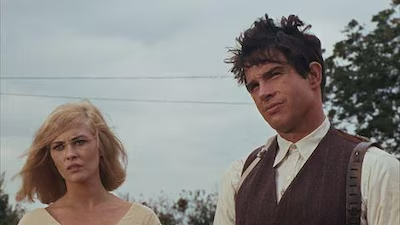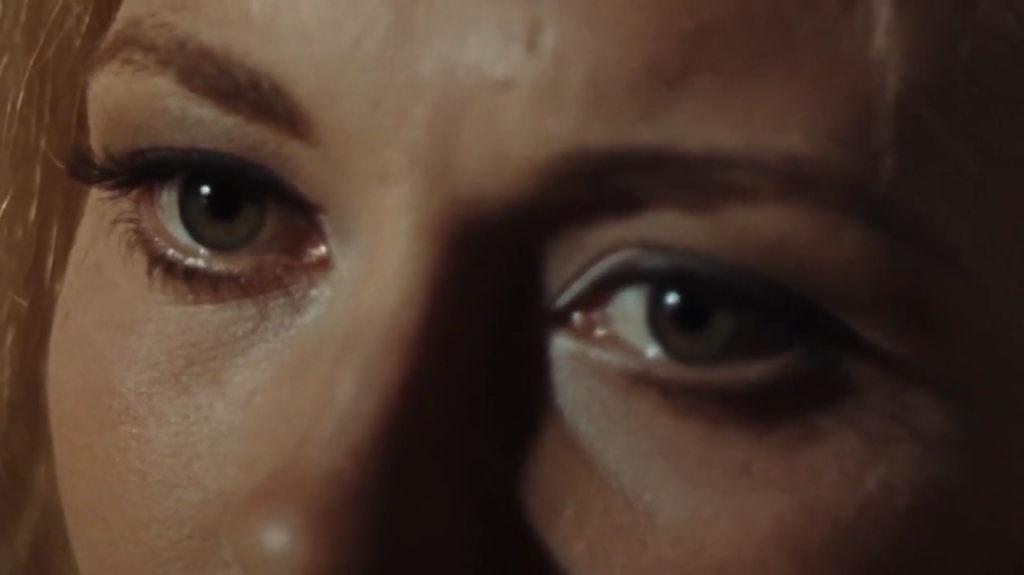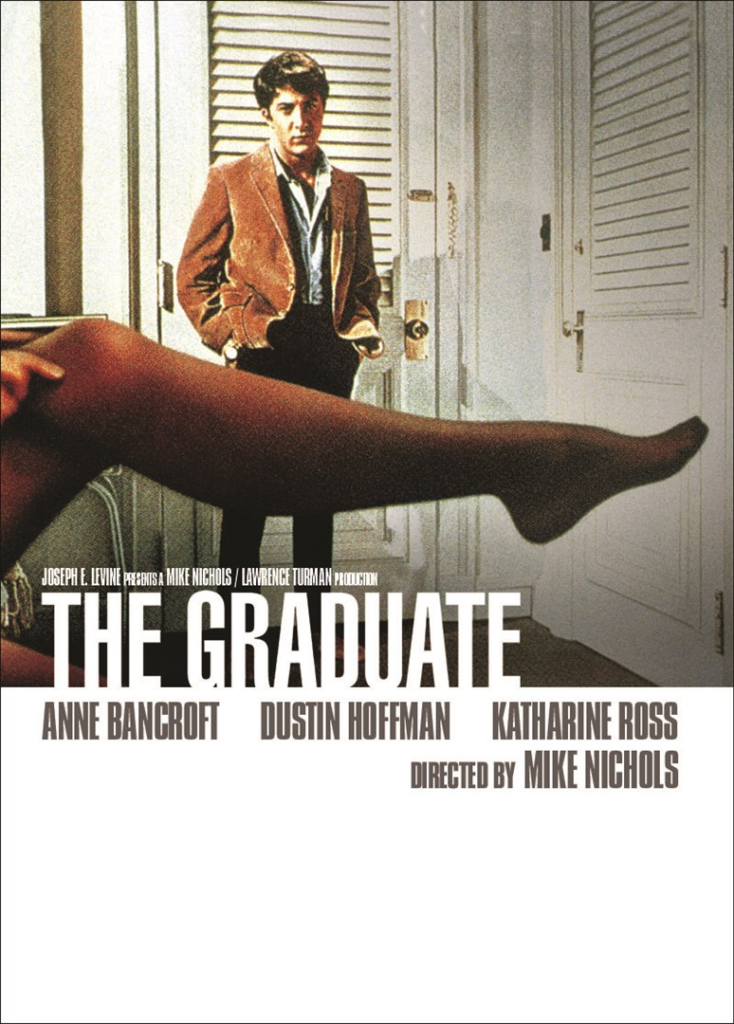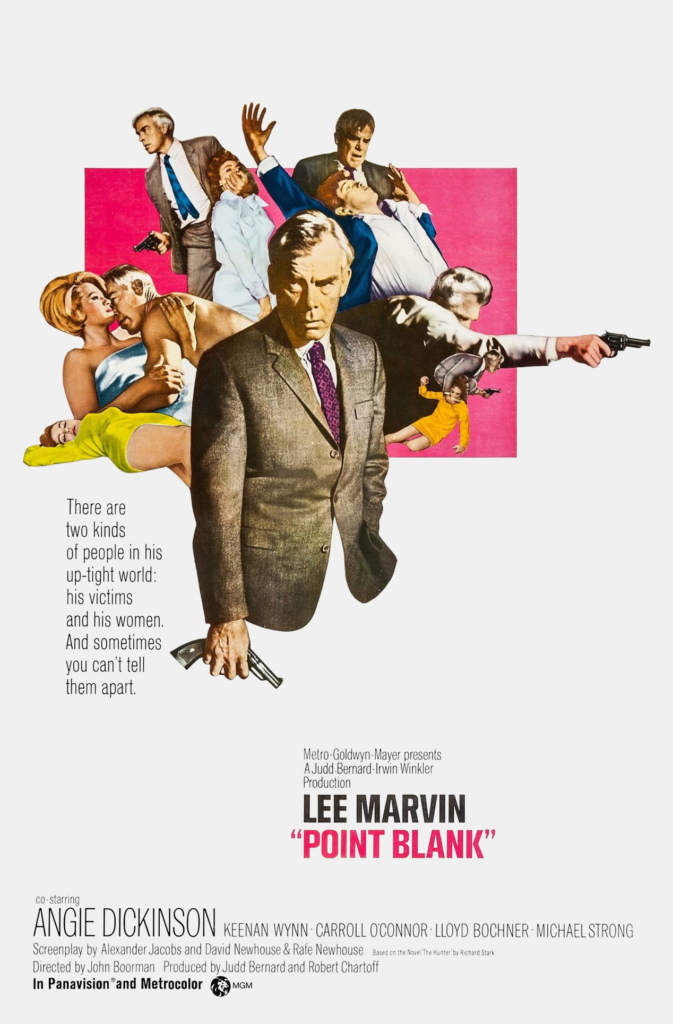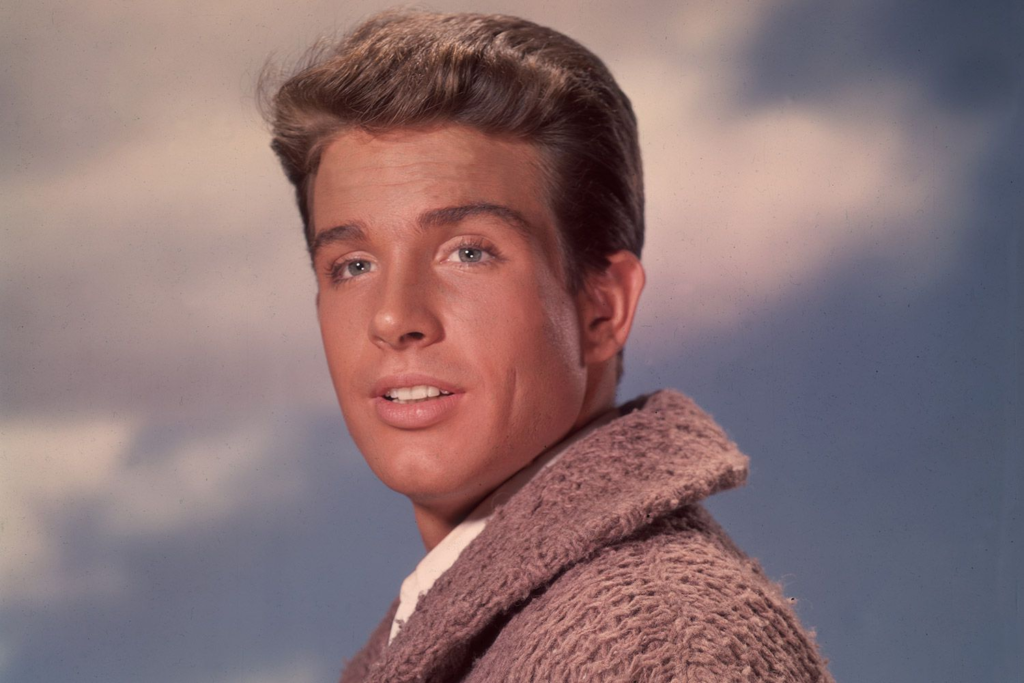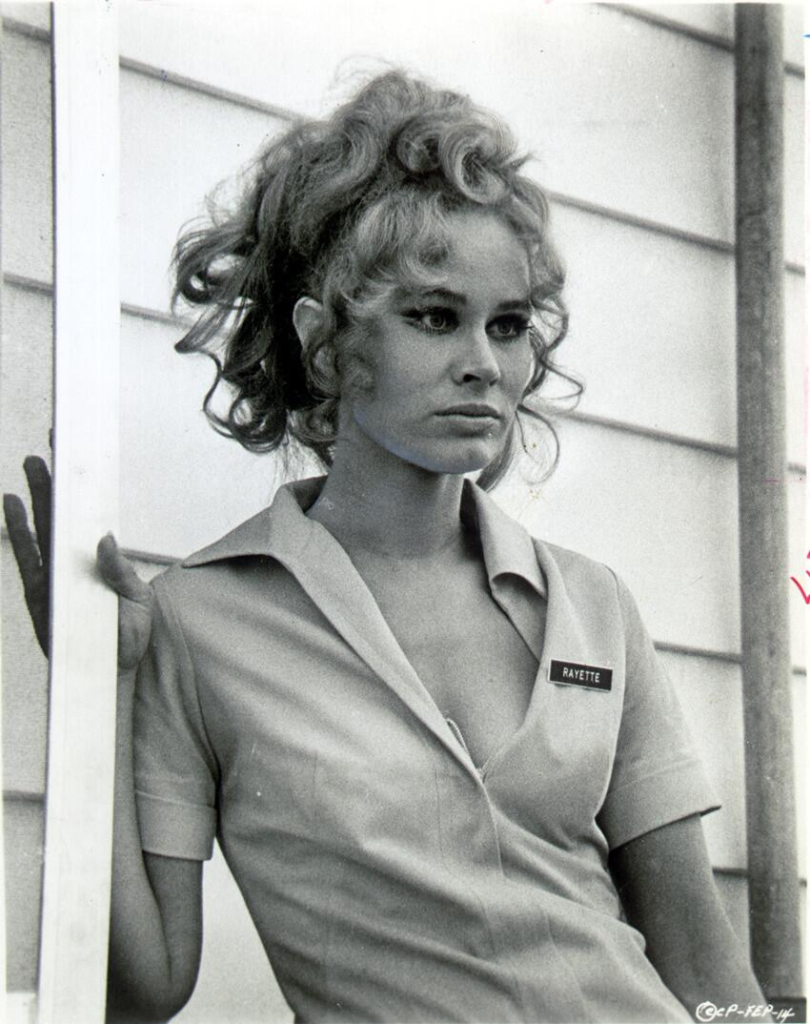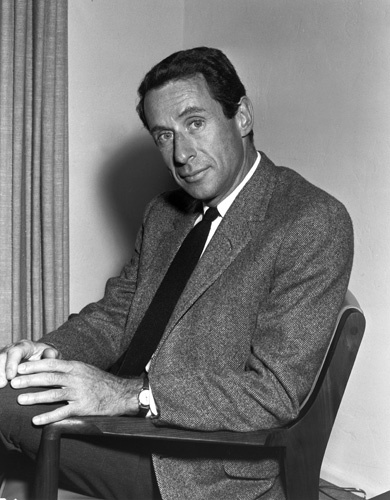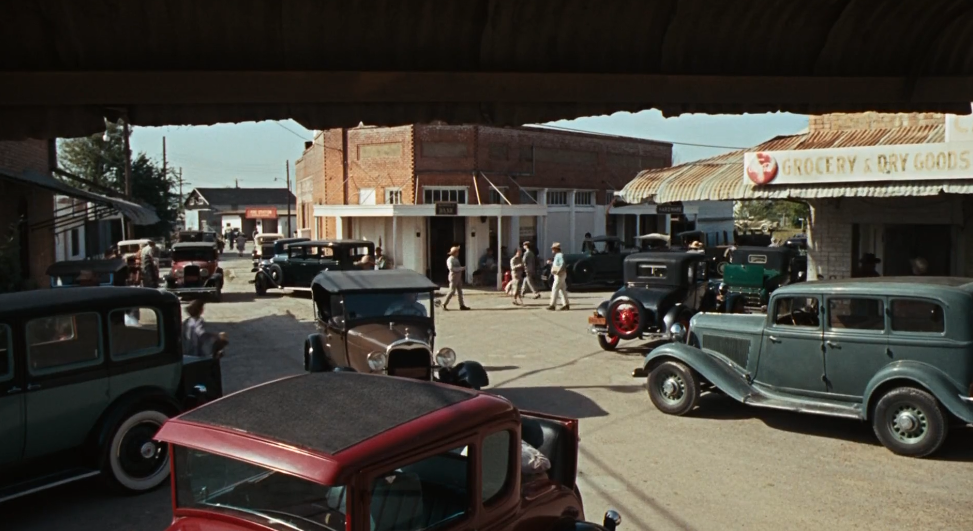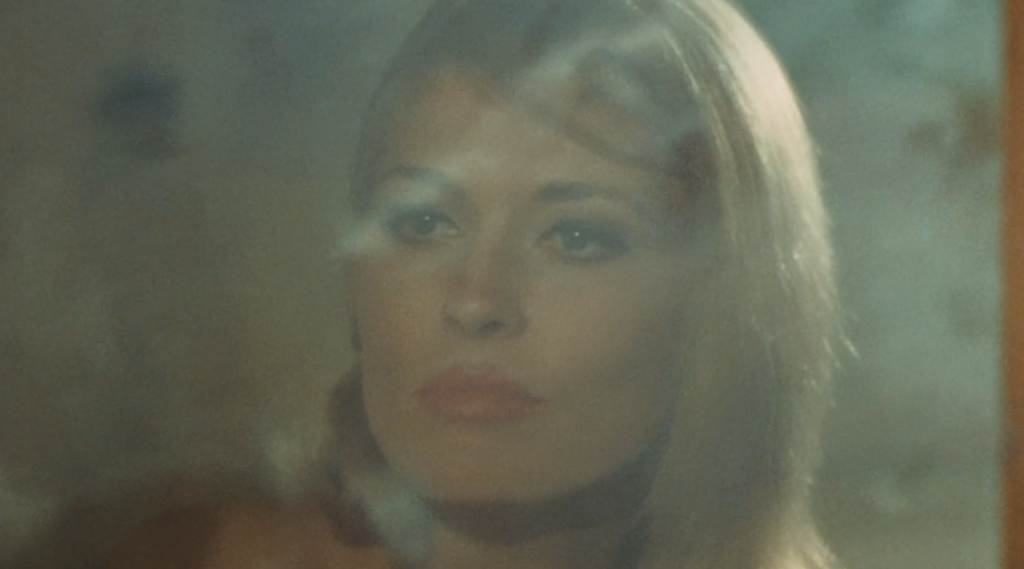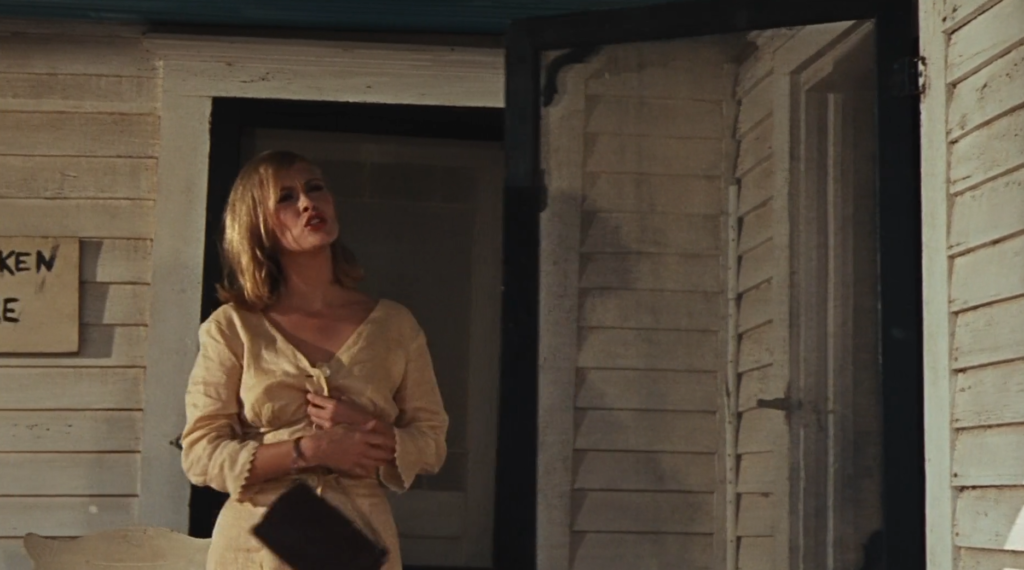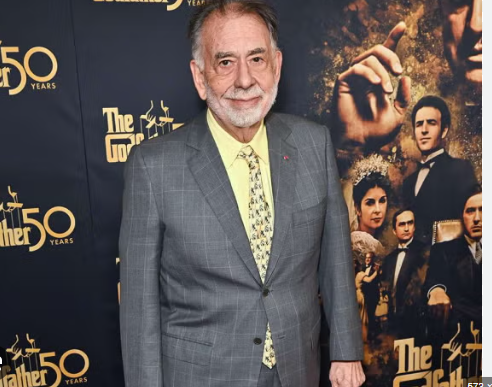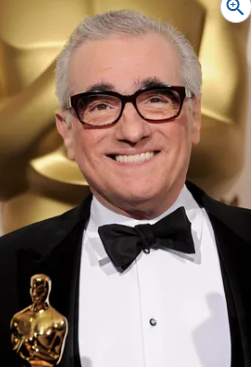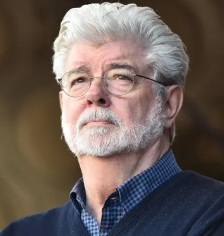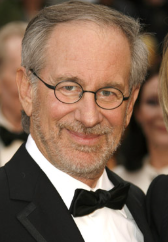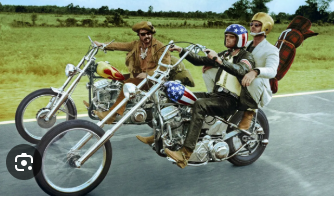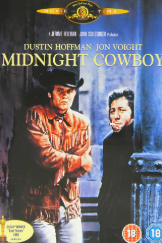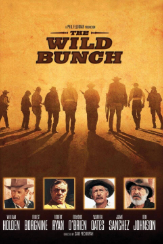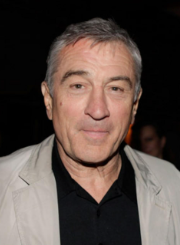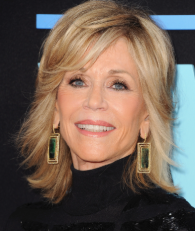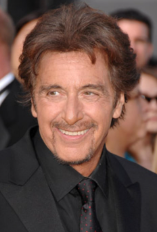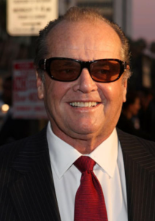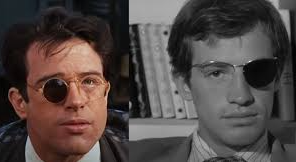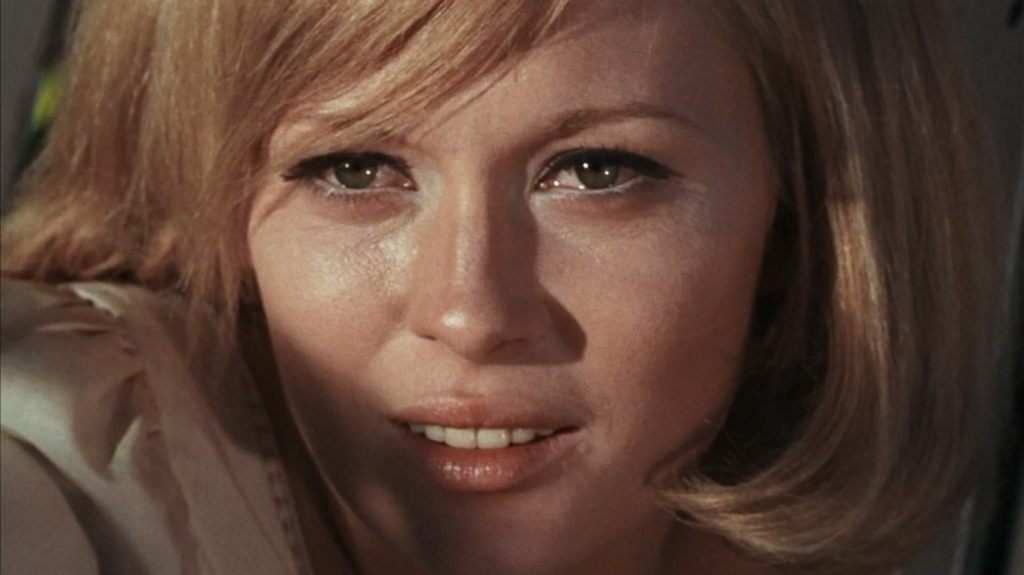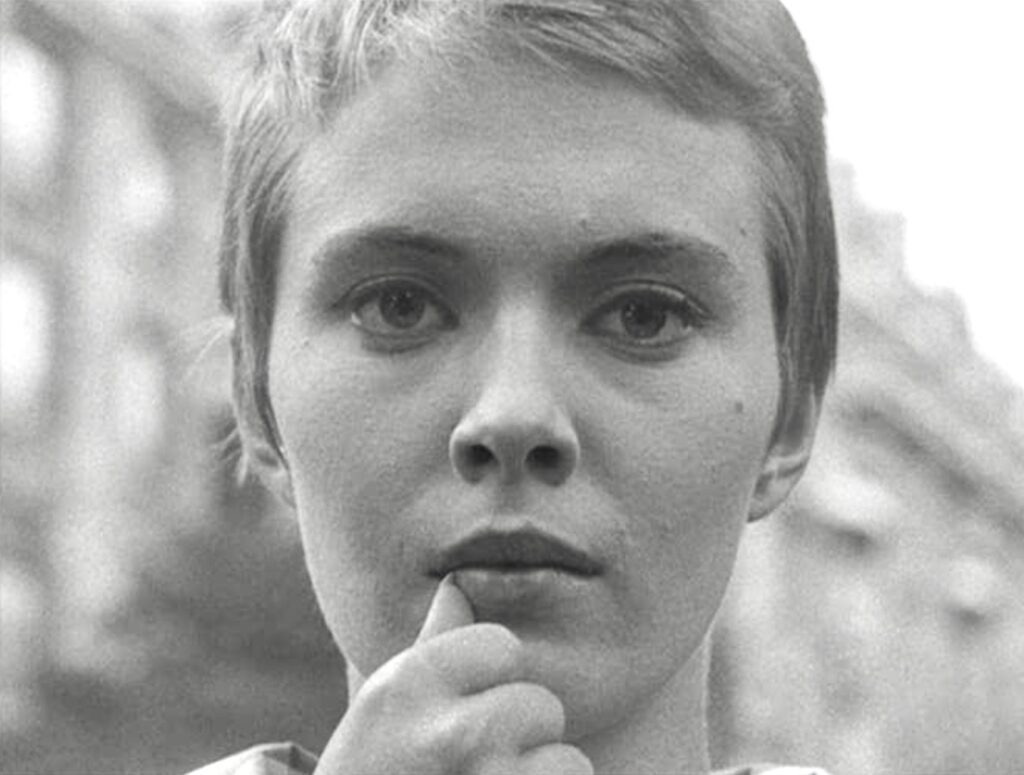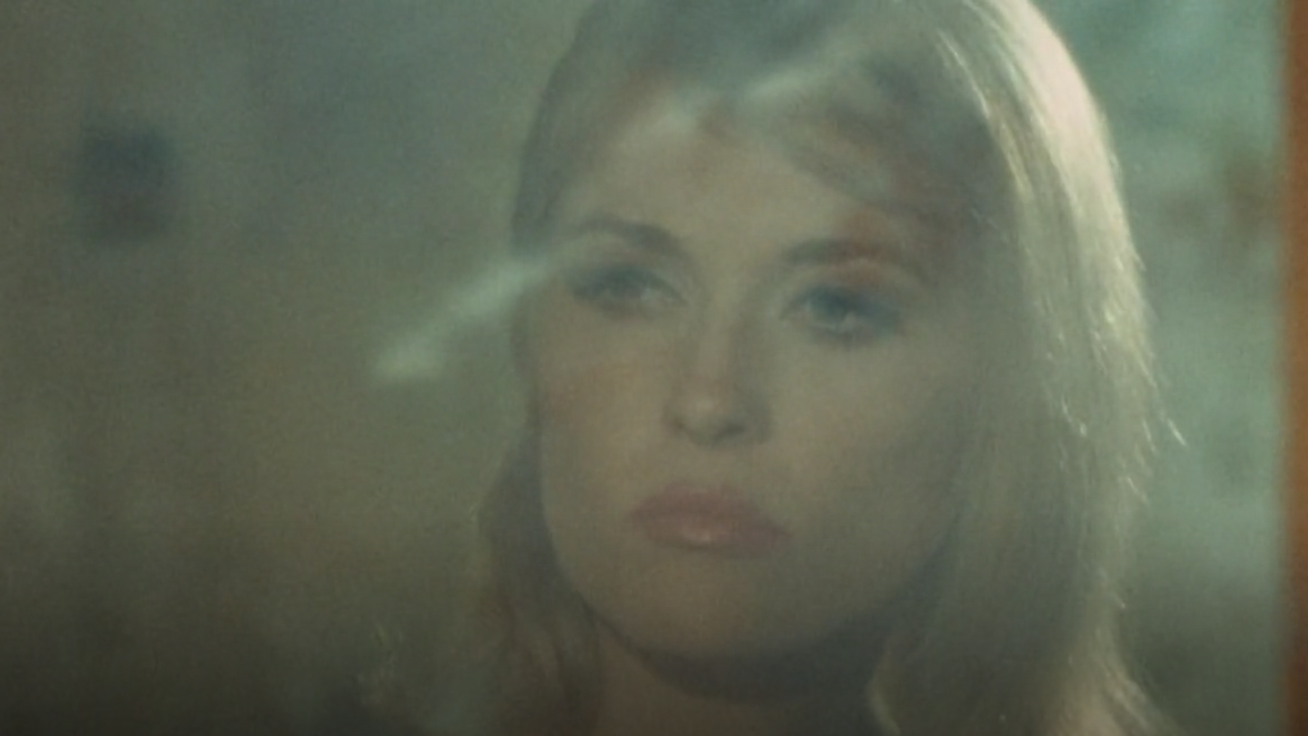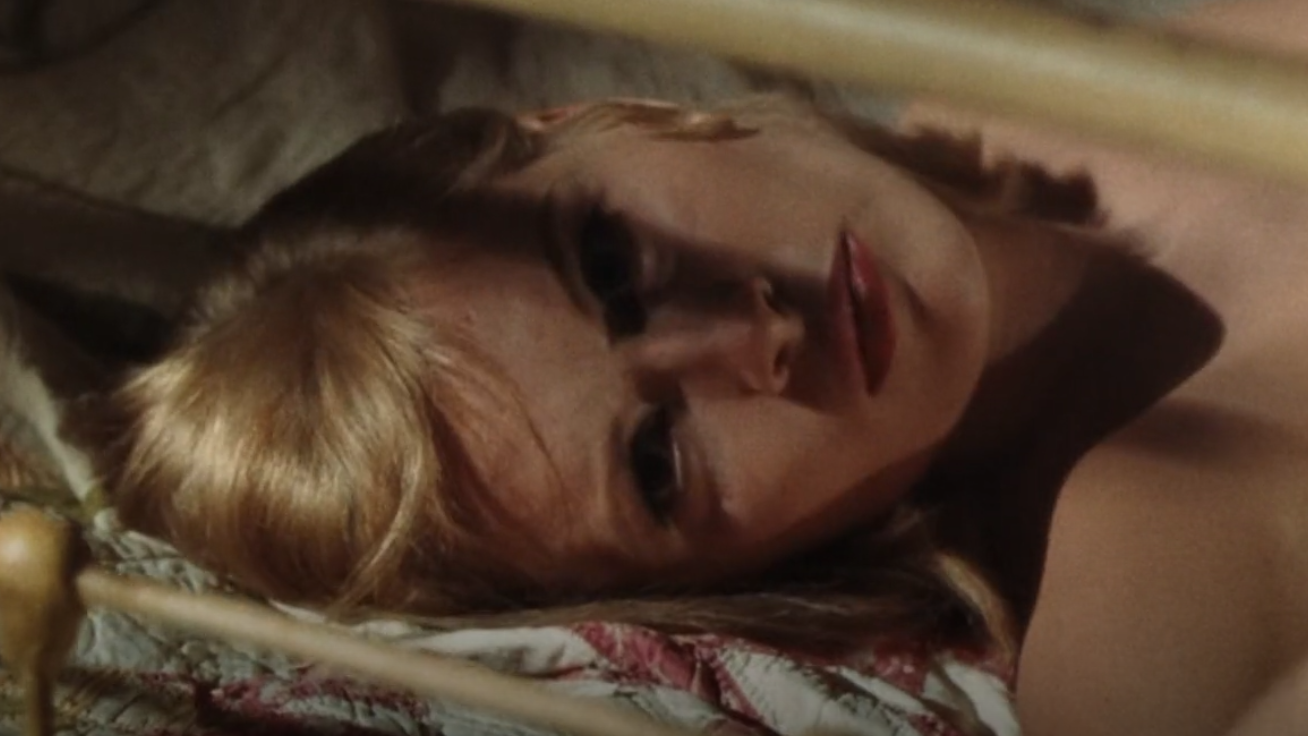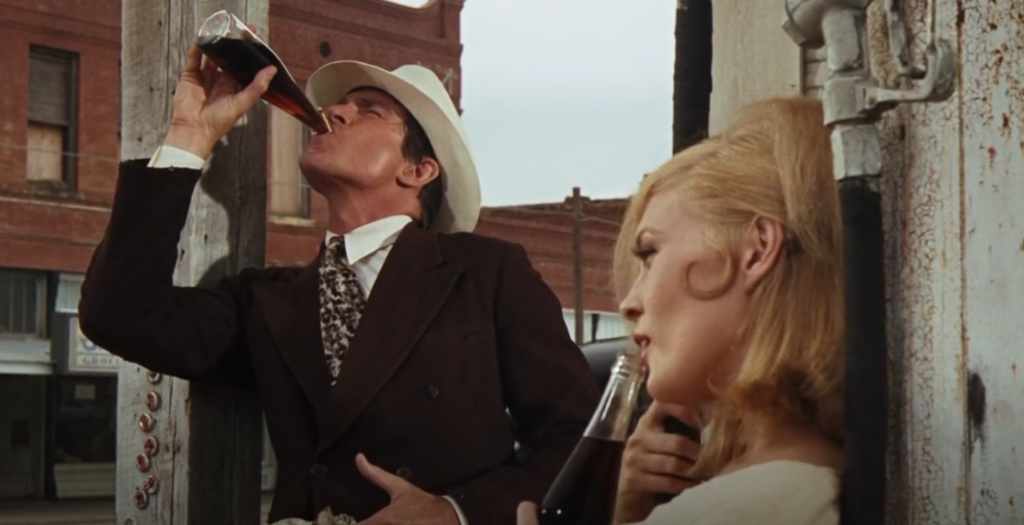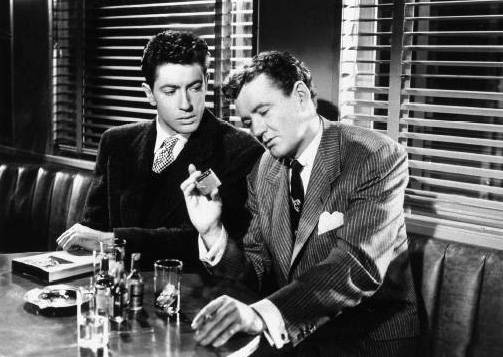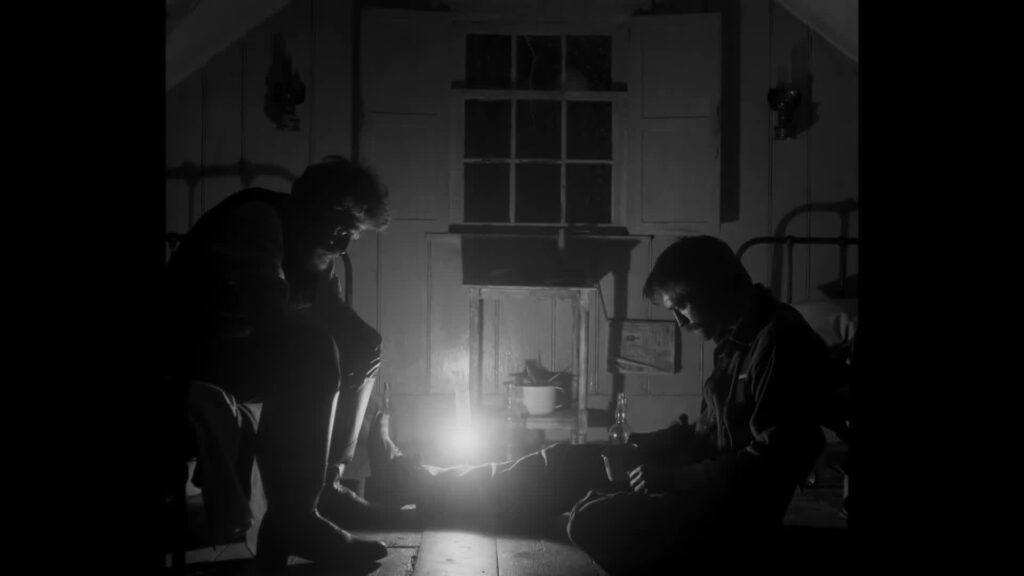Clyde Barrow played by Warren Beatty
Beatty made an impressionable screen debut in Splendor in the Grass (Kazan, 1961) as a tortured teenager. Prior to this film, Beatty earned a reoccurring role in the television series The Many Loves of Dobie Gillis in 1959 – which he left before the first season concluded to make his first and last Broadway appearance, in A Loss of Roses (1959). In the lead up to Bonnie and Clyde, Warren Beatty had worked with Arthur Penn on Mickey One (1965), and then in 1967, Beatty assigned himself the duty of star and producer on Bonnie and Clyde – the film was a huge success, nominated for 10 Academy Awards, including Warren Beatty’s Best Actor nomination. The reason behind Warren Beatty being cast as Clyde Barrow is that screenwriters, David Newman and Robert Benton, submitted the screenplay to François Truffaut and Jean-Luc Godard, which Truffaut then showed the script to Beatty, resulting in him buying the option. Beatty hired Arthur Penn as the director, casting himself as Clyde.
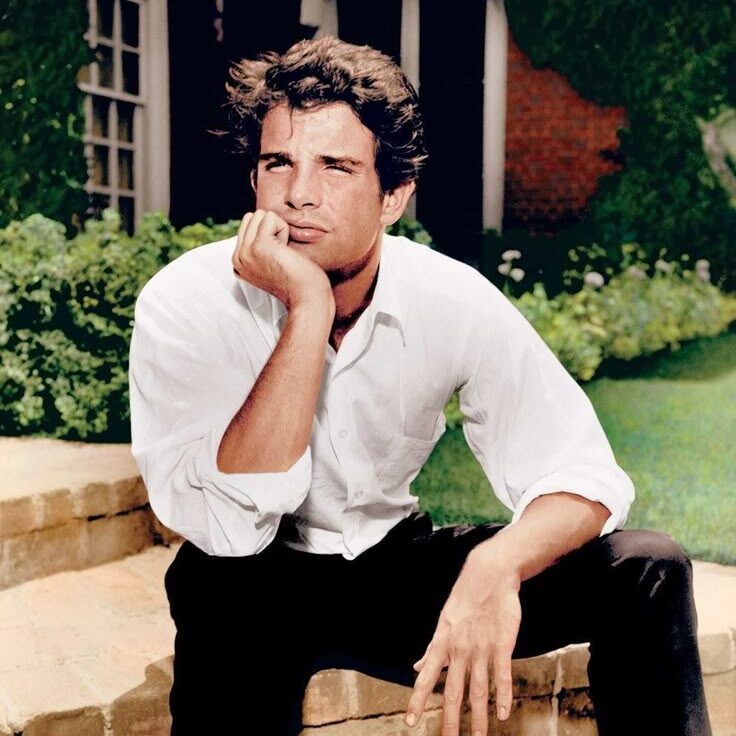
Bonnie Parker played by Faye Dunaway
Dunaway won critical acclaim for her role in Hogan’s Goat (Alfred, 1965 – play) as Kathleen Stanton. During the same year as the release of Bonnie and Clyde, she began her film career in The Happening (Silverstein, 1967) as Sandy and Hurry Sundown (Preminger, 1967) as Lou McDowell. Bonnie and Clyde (13/08/67) is considered her breakout film, given that she received her first Academy Award nomination. In my own opinion, I believe Dunaway was cast for this role as she was young and ambitious, just like Bonnie, and with further research it seems that Faye Dunaway relates to the character: “Never have I felt so close to a character as I felt to Bonnie…She was yearning, edgy, ambitious southern girl who wanted to get out…I knew everything about wanting to get out” – quote from her 1995 autobiography, Looking for Gatsby.
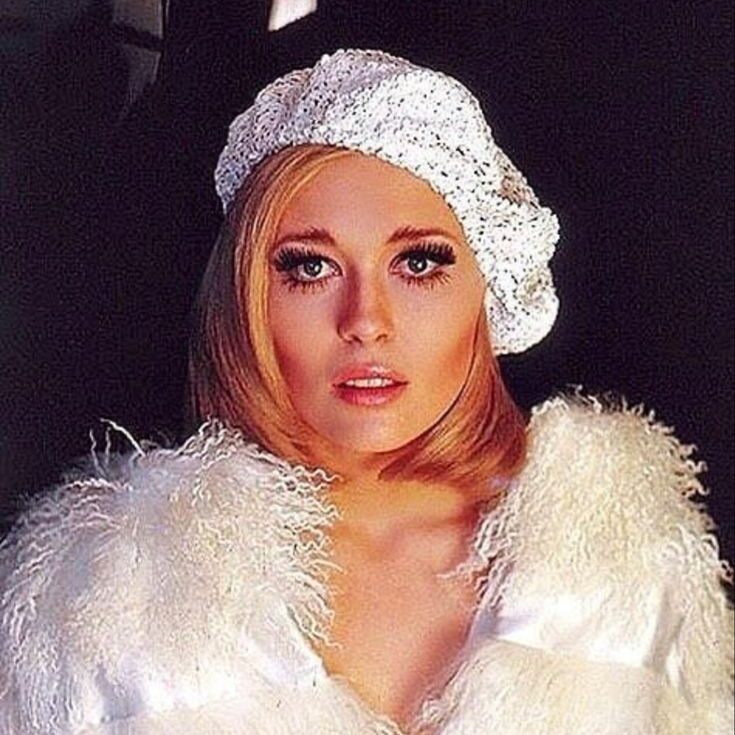
C.W Moss played by Michael J. Pollard
Before Bonnie and Clyde, he starred in Hemingway’s Adventures of a Young Man (1962), The Russians are Coming The Russians are Coming (1966), The Absent-minded Professor (1961), It Happened To Jane (1959), and Summer Magic (1963). Pollard was often typecasted as the impish or eccentric character. He is widely known for his role as C.W. Moss in Bonnie and Clyde, he was also nominated an Oscar for Best Actor in a Supporting Role due to this role. I think he was cast because Moss is the eccentric sidekick character in Bonnie and Clyde, he was the perfect fit.
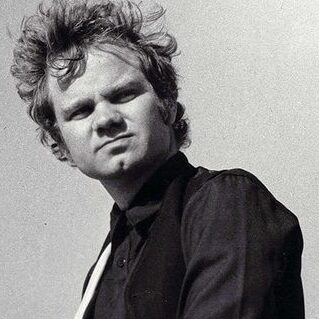
Buck Barrow played by Gene Hackman
Best known for his role as a detective, Popeye Doyle, in The French Connection (1971), Hackman won the Academy Award for Best Actor because of this film. His first credited film was Lilith (1964, Rossen) which also starred Warren Beatty, which is why I think he was cast for the role of Buck Barrow because of his connection to Beatty.

Blache Barrow played by Estelle Parsons
Bonnie and Clyde put her in the spotlight, earning her an Academy Award for her role as Blanche. Her career began in 1954 on a television show called “Today”, playing herself. Parsons was also in The Absent-minded Professor in 1961 alongside C.W. Moss. I think she was cast for the role because of her strong reputation as an actress prior to the film, proving herself fit for the role.
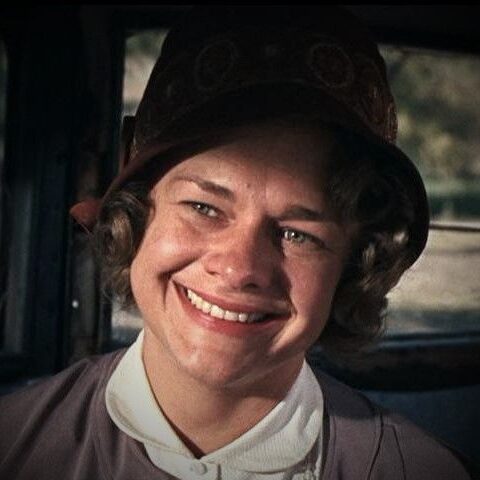
Frank Hamer played by Denver Pyle
Most known for his role as Briscoe Darling in multiple episodes of The Andy Griffith show which began in 1960. Starring in Gunpoint (1966), Tammy and The Millionaire (1967), The Left Handed Gun (1958), The Horse Soldiers (1959). He made a career playing drawling, Southern characters, which isn’t far from what officer Hamer was in Bonnie and Clyde, hence why I believe he was cast for the role.
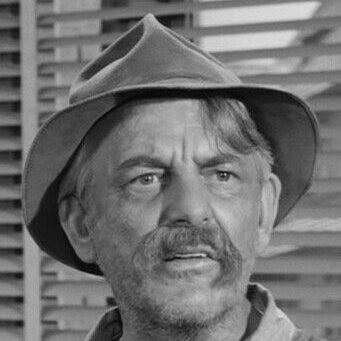
Ivan Moss played by Dub Taylor
Most famous for You Can’t Take It With You (1938) as Ed Carmichael, having a reputation for playing supporting roles in Westerns, yet also having a knack for blending comedy and pathos, which is why I think he was cast for the role of Ivan Moss – a pivotal character yet still holding the fractured comedy often seen in French New Wave films.
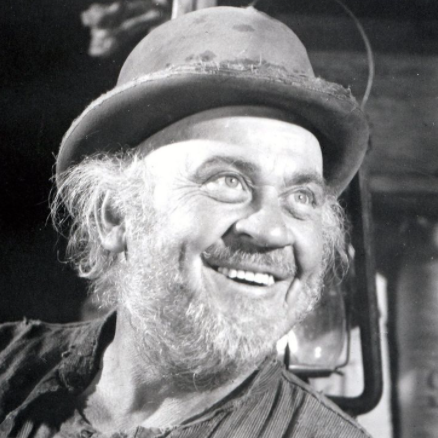
Eugene Grizzard played by Gene Wilder
Best known for playing Willy Wonka in “Willy Wonka & The Chocolate Factory” (1971). Wilder was a comedian, starting out in serious plays on Broadway, such as, “One Flew Over the Cuckoo’s Nest” (1963) and “Mother Courage and Her Children”(1963). Bonnie and Clyde was his film debut in 1967.
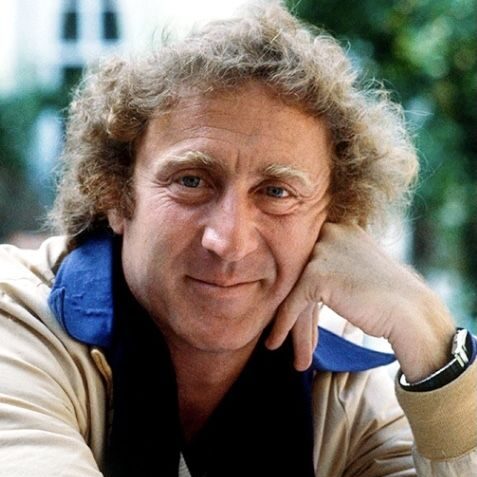
Mise-en-scéne
Locations: Unlike Casablanca, Bonnie and Clyde was shot on location for the most part – Texas to be exact. This created a strong sense of verisimilitude because the original Bonnie Parker and Clyde Barrow were from Texas.
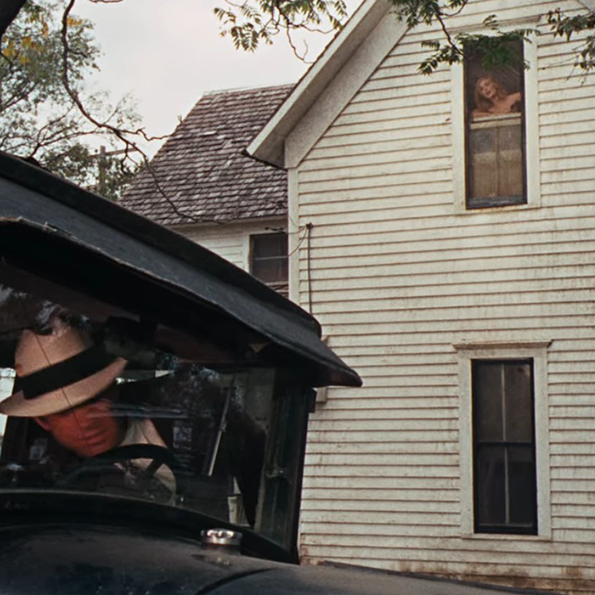
It is believed that the real Bonnie and Clyde first met in 1930 at a friend’s house on Herbert Street in West Dallas, however, in the film they meet at her mother’s home which is also located in Dallas (Waxahachie), providing the film good historical accuracy.
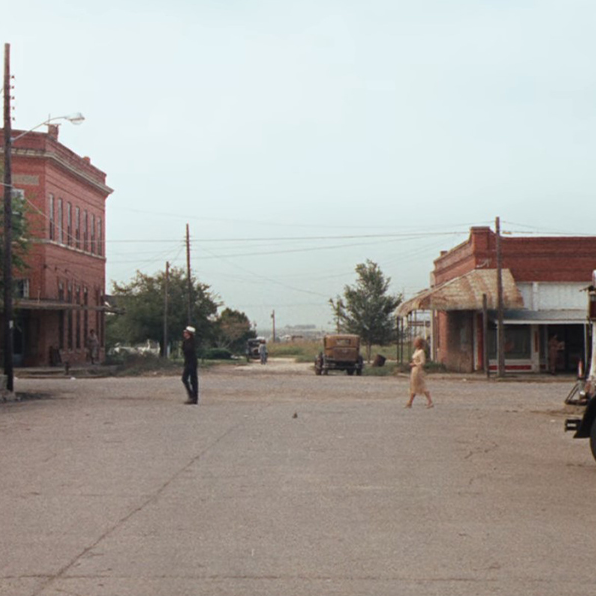
In the scene where Clyde takes Bonnie out into town to impress her with his criminal credentials, staging a robbery on a grocery store. Another point for historical accuracy, the film is set in 1930s America, where businesses were deeply affected by The Great Depression; the deserted streets highlight this point further unlike in Casablanca which portrayed 1940s French Morocco inaccurately, the real city a far cry from its depiction in the film aside from a few cultural decorations.
Sets (interiors):
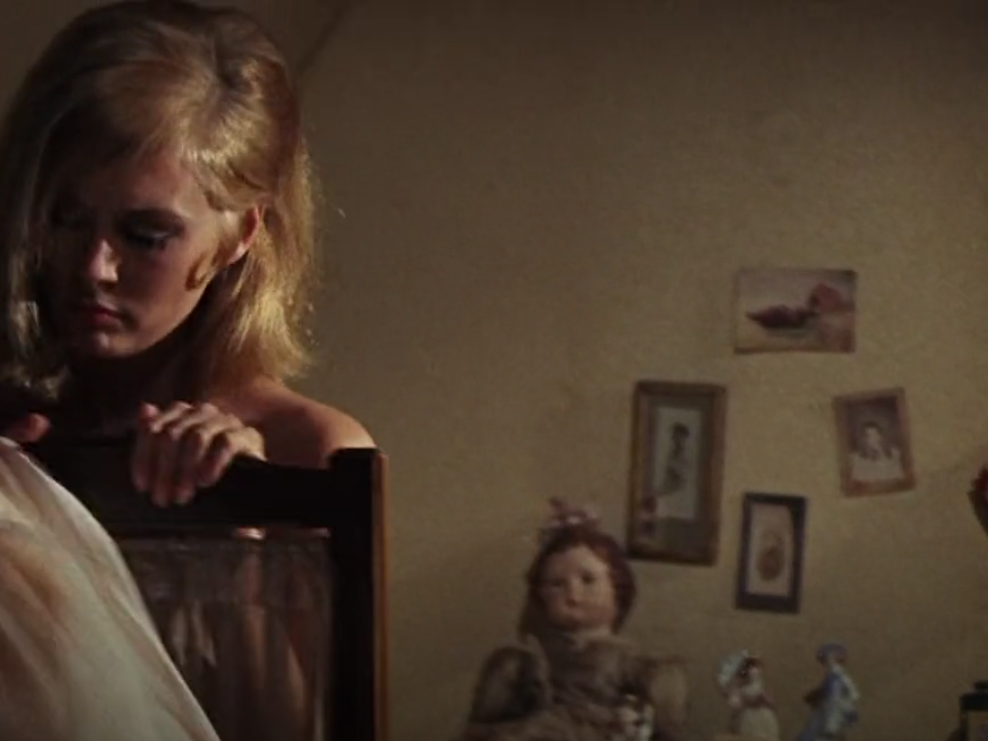
The interior of Bonnie’s room seems to be reminiscent of a childhood bedroom with porcelain dolls and various figurines, which juxtaposes with Bonnie, naked, in the foreground. Despite her obvious womanhood and sensuality, she is still surrounded by her past, weighing her down. This is a common theme throughout the film: Bonnie’s lust for life, to get out into the world, away from her dead-end job, and her life as it is.
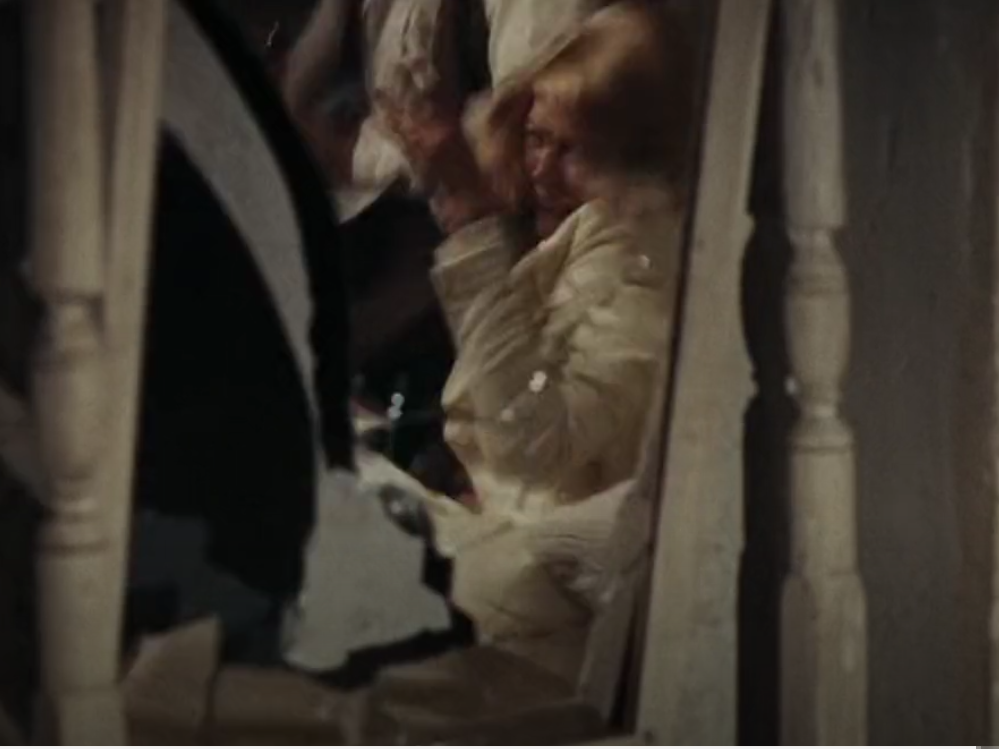
This shot in particular, successfully encapsulates Bonnie and Clyde’s relationship: tumultuous yet inseparable. According to those who were close to Parker and Barrow knew that their relationship was just as fractured as it was romantic, notorious for their constant bickering. Also, there are multiple photographs of the couple kissing, and Bonnie still has her wedding ring on from a previous relationship with Roy Thornton (according to www.vocal.media) – the two got married when Bonnie was 16 years old, yet it quickly turned physically abusive, resulting in the separation.
Costumes:
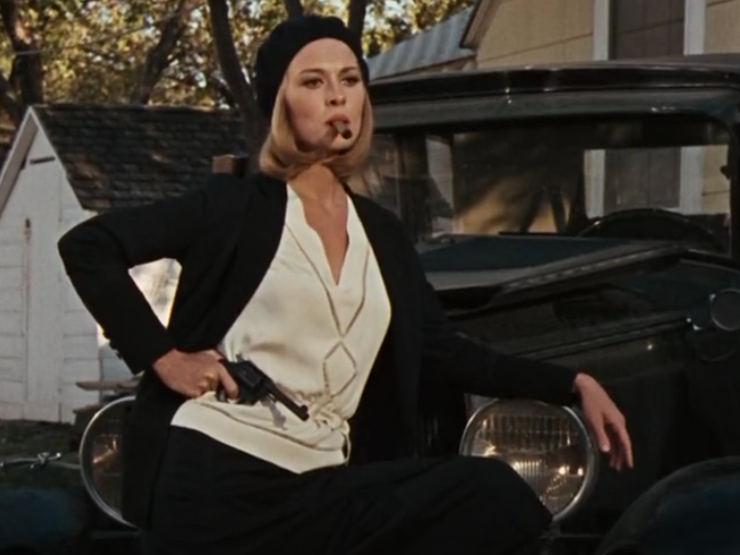
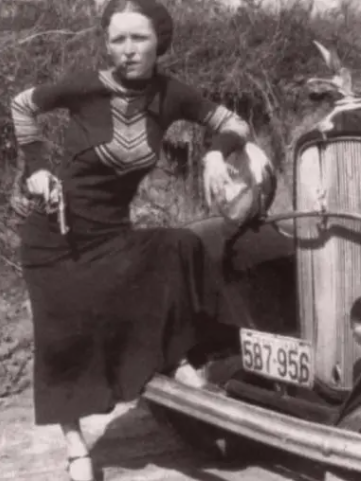
In the scene where we meet Clyde’s brother, Buck, and his wife, Blanche, Bonnie poses for a photograph with a cigar hanging from her lips and a pistol held to her hip. This is a replication of Bonnie Parker in the 1930s, both wear a black beret, long black skirt, slight differences in pattern and colour with the top and cardigan, but overall an accurate nod to the original Bonnie.
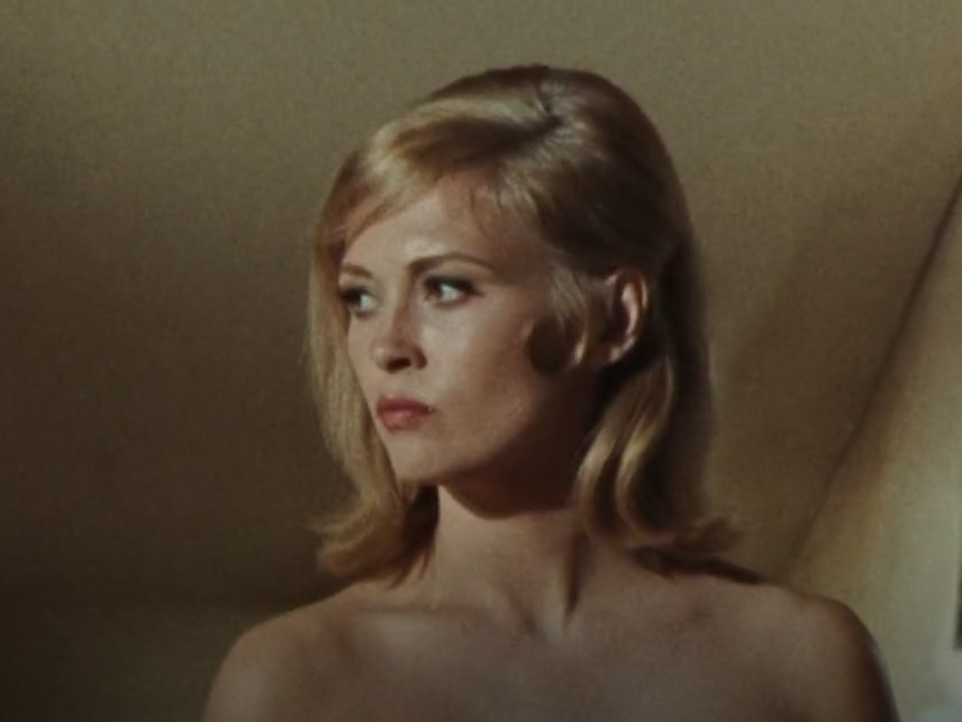
The lack of clothing in this opening scene suggests to the spectator that Bonnie is a provocative character, modesty and conformity aren’t her priority as she has gone down in history as one of the most famous outlaws in America. Also, around the time the film was made (1967), the Hayes Code was no longer in effect, meaning that films could get away with kissing, nudity, and violence; the impact on audiences at the time must have been shocking, however, it stood as a turning point for society and modern cinema.
Props:
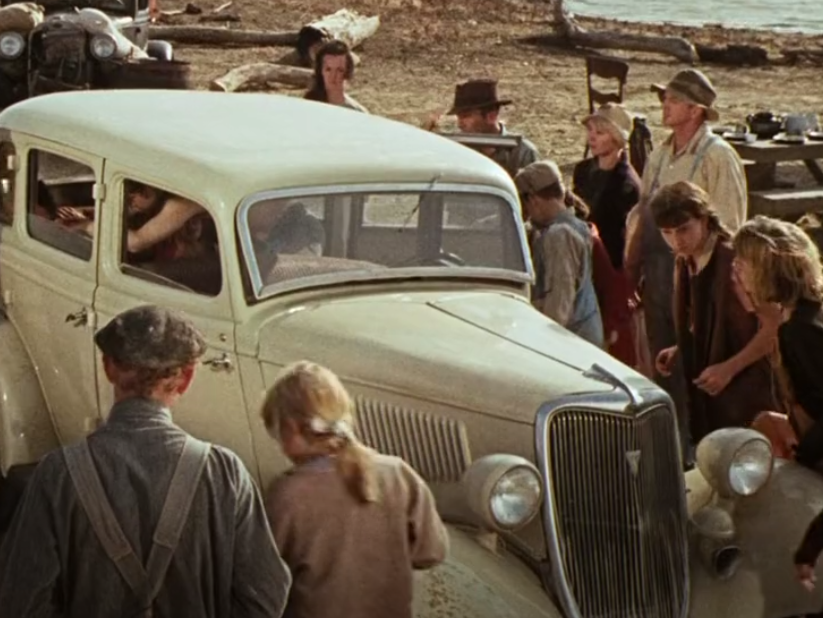
The cars in this film were rented by Arthur Penn from a Mr. Seng (lived in Castro Valley, California) to give the film a layer of historical authenticity, keeping the vehicles accurate to 1930s America.
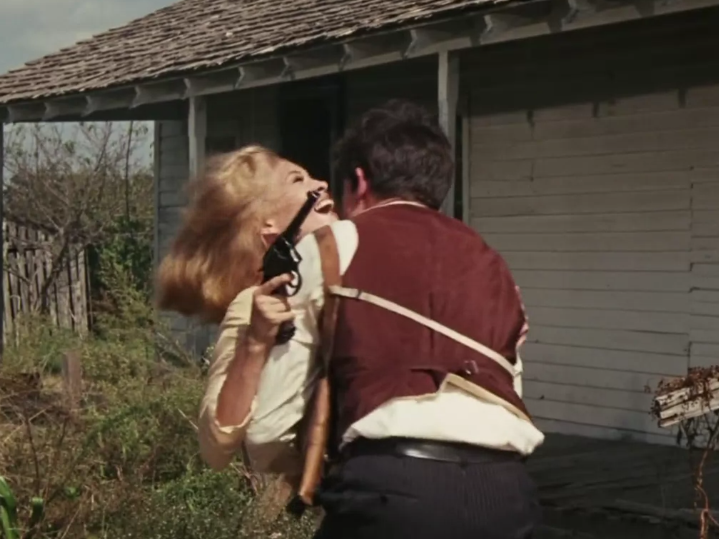
Guns in Bonnie and Clyde stood true to the era it was set in, according to imfdb.org, the guns used in he film included: (handguns) Smith & Wesson Model 10, Colt New Service, Colt Police Service, and Colt M1911A1. (submachine guns) Thompson M1928. (rifles) WInchester Model 1892. (shotguns) Winchester Model 1897, Double-barrelled shotgun – along with an Mk 2 hand grenade used by C.W. Moss. The usage of these weapons amplifies the historical accuracy and the notion of Bonnie and Clyde being reckless criminals trying to get by during the Great Depression through robbery.
Editing:
What style of editing is used in Bonnie and Clyde? Straying away from the Classical Hollywood style of invisible editing, Bonnie and Clyde takes inspiration from the French New Wave style: discontinuity editing, which consists of jump cuts and non-linear, or confusing narratives. This can be seen in French films from the era, for example, Plein Soleil (1960) which uses a jump cut to show a skip in time:

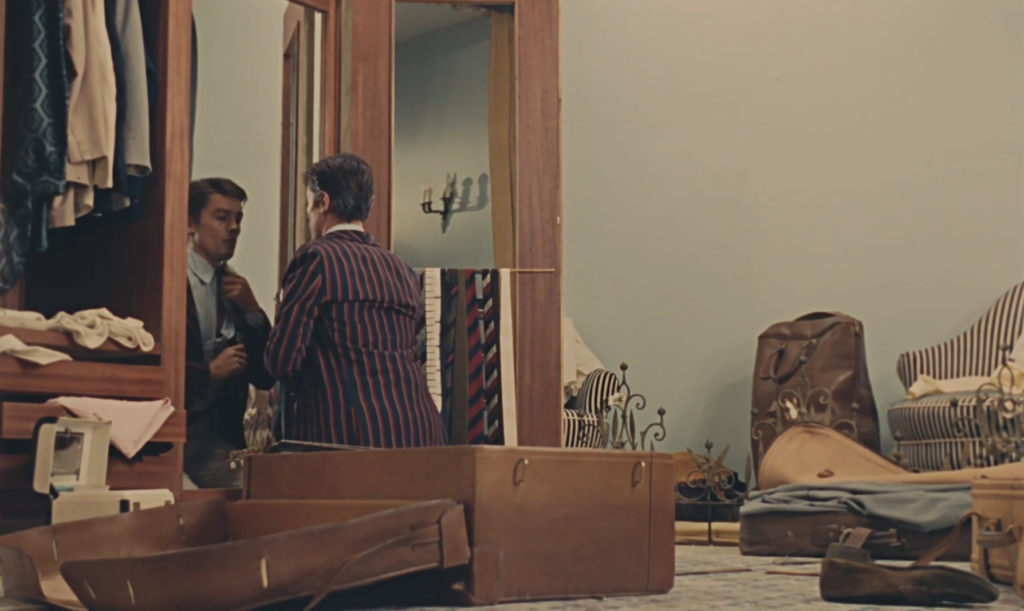
An example of a shot sequence that has been constructed and what impact does it have on the audience: In the opening scene we’re shown Bonnie in her bedroom, and immediately the audience is informed of her ambition, frustration, and desire to get out. The bedframe resembles prison bars and the fractured jump cuts showing her hitting the bedframe further conveys her frustration.
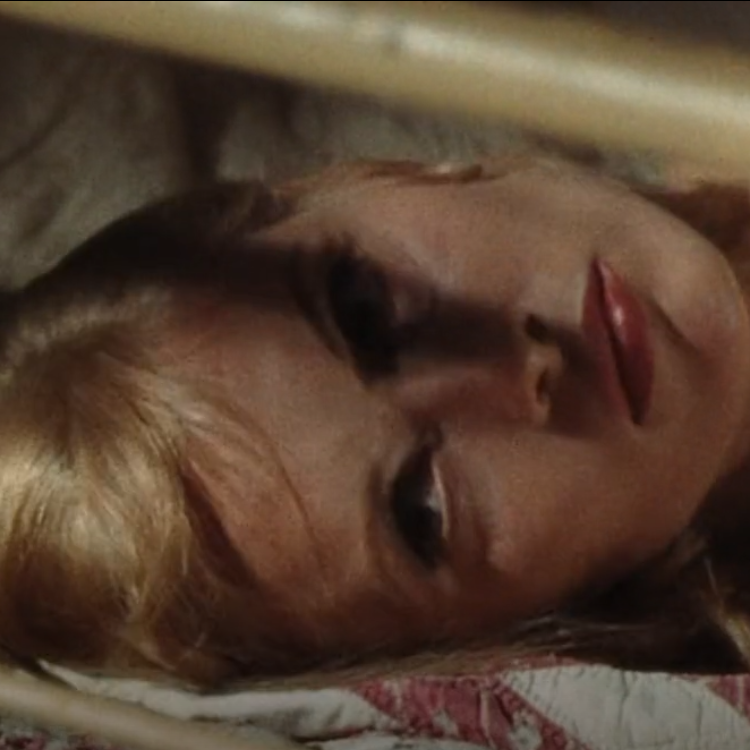
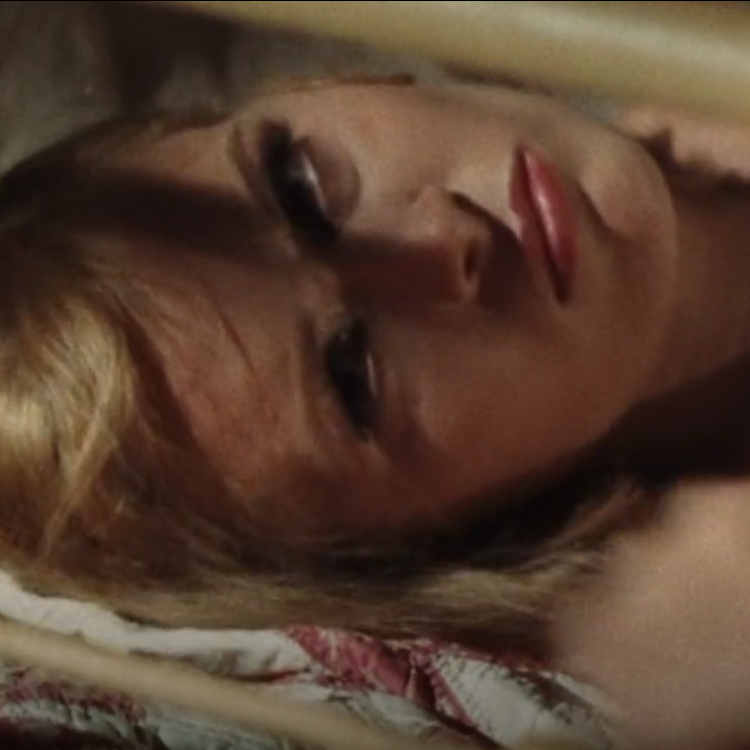
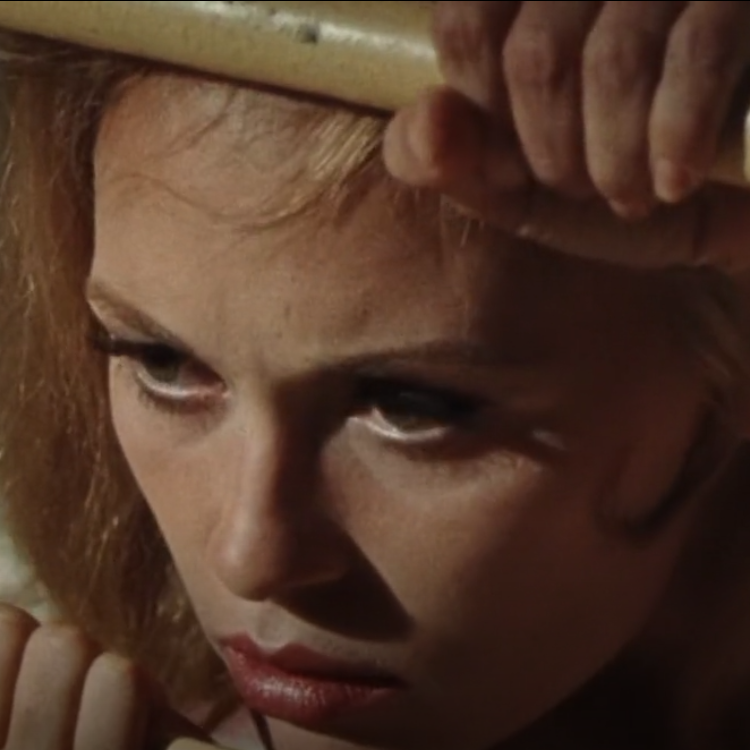
Sound:
The dialogue in Bonnie and Clyde is a strong tool for foreshadowing the ultimate end of the couple, for example, when Clyde is speaking to Bonnie’s mother:
Bonnie’s Mother: You know Clyde, I read about you all in the papers, and I just get scared.
Clyde Barrow: Now Ms. Parker, don’t you believe what you read in all them newspapers. That’s the law talkin’ there. They want us to look big so they gonna look big when they catch us. And they ain’t gonna catch us. ‘Cause I’m even better at runnin’ than I am at robbin’ banks! Shoot, if we’d done half that stuff they said we’d done in that paper, we’d be millionaires by now, wouldn’t we? But Ms. Parker, this here’s the way we know best how to make money. But we gonna be quittin’ all this, as soon as the hard times are over. I can tell ya that. Why just the other night, me and Bonnie were talkin’. And we were talkin’ about the time we’re gonna settle down and get us a home. And uh, she says to me, she says, “You know, I couldn’t bear to live more than three miles from my precious Mother.” Now how’d ya like that, Mother Parker?
- Bluegrass music is used throughout the film to adhere to the French New Wave’s disjointed humour, abruptly shifting moods, for example, during a lighthearted moment between Bonnie and Clyde bluegrass music can be heard playing under the dialogue, then cutting to show an ice cream parlour with C.W’s dad speaking with Frank Hamer – planning the inevitable death of the couple.
- Editor Dede Allen was an innovator for using sound bridges in film, in 1967 they weren’t that popular, yet now it’s a given in all Hollywood films. On the contrary, Casablanca used a nearly continuous underscore to avoid abrupt audio shifts.
- Foley sounds were used to amplify the visceral effect on the spectator. Specifically in scenes where there were gunshots (diegetic), the gunshots were intensified in post-production with the help of sound effects created by foley artists, as the violence increased so did the volume of the gunshots.
Aesthetics:
Realism – Given that the story of Bonnie and Clyde is real, I believe it is important that film was historically accurate, visually speaking. The film had strong social realism as it drew attention to the social and political conditions of 1930s America, showcasing gender roles and how they can be challenged, however they barely showed the reality of people of colour during this time.
Tone – Bathos is a reoccurring tone in Bonnie and Clyde, scenes often shifting from trivial and humorous to serious, this is reflective of the French New Wave’s impact on New Hollywood.
Visual style (French New Wave) – The fractured editing style, documentary-esque shots, such as long tracking shots and jump cuts all showcased the clear inspiration Penn took from the French New Wave visual style, and I believe it was fitting given the story of the couple – a real couple, so a documentary-esque visual style makes perfect sense, sometimes characters looking straight down the lens.
Also, intertextual referencing was used to amplify the historical realism, one of Bonnie Parker’s poems, “The Story of Bonnie And Clyde”, was read by Faye Dunaway in the role of Bonnie.
Political and Social Contexts of Bonnie and Clyde:
What global events had just taken place and were taking place at the time of the film’s production? The JFK assassination in 1963, Cuban Missile Crisis in 1962, Civil Rights Act in 1964 and Nelson Mandela was sentenced to life in prison, Vietnam War (1955-75) along with the White House protests in 1966, protesting against America’s involvement in the war, second-wave feminist movement – fighting for equality within the workplace as well as sexual liberation. France was also getting back on its feet after the Second World War, rebuilding the country and nation’s identity, which ultimately led to the French New Wave.
How did these events impact the style and content of the film? During the 1960s, America and the world were going through numerous shocks, changes, and movements in the culture, which caused the French New Wave – France was craving experimentation, this brought filmmakers like Godard and Truffaut into the spotlight. Godard and Truffaut played a big part in the style of Bonnie and Clyde, making the film experimental, explicit for the time with implied nudity and excessive violence.
Representations featured in Bonnie and Clyde:
WOMEN: Bonnie and Blanche. Bonnie represents the new generation of women at the time, second-wave feminist movement during the sixties so that would’ve influenced the character despite the real story was during the 1930s. Reflecting the youth. Blanche is a more traditional female character, her characteristics are shown in Casablanca as well with people such as Ilsa, who is docile, are only mentioned or regarded when their male counterparts are there.
MEN: Clyde, Frank, Eugene and C.W. Heavy male cast which isn’t shocking given that the industry, even today, is still dominated by male actors. Represented by the typical authoritative characteristics, carrying the narrative for the most part just like in Casablanca.
AUTHORITY FIGURES: Frank Hamer, the officer who Bonnie humiliated instead of the killing him, he sought revenge on the couple, orchestrating an ambush with C.W’s father to kill them in the final scene.
PEOPLE OF COLOUR: Only shown in two scenes, when the original owners of the home Bonnie and Clyde were staying in returned, the black man didn’t have any dialogue, only getting to fire the gun Clyde gave him at the sign, an act of defiance. And in the final shoot out scene there’s two black farmers driving past just before the betrayal and Bonnie and Clyde meet their demise.
